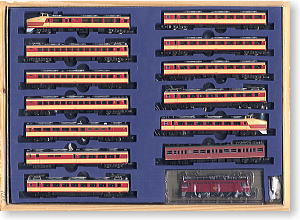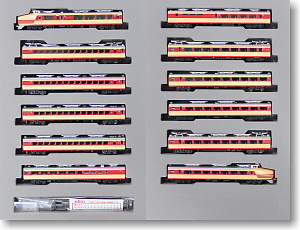With the cherry blossoms blooming, the league matches of the Pro-Baseball have begun, it really feels like spring now.
(please ignore the fact that the intro. is slightly off current date)
The Pro-Baseball under the NPB (Nippon Pro Baseball Organization) are the two leagues, Central league and Pacific league, and have 6 teams each for a total of 12 teams battling it out. Many of the teams have animals that seem strong
crowned on their name, but out of these, there are 3 teams that have a bird in their names: Fukuoka Softbank Hawks, Tohoku Rakuten Golden Eagles, and the Tokyo Yakult Swallows.
A hawk and an eagle both seem rather strong. A swallow tends to make nest near the buildings of humans, and thus has an impression of a friendly bird, however. It's clearly different to the previous two. But the Swallows actually carry a
very traditional name.
The Tokyo Yakult Swallows were actually a baseball team originally formed in 1950s under the name of
"JNR Swallows".
What, JNR!?.
It's unimaginable these days, but 60years agoe, the Japan National Railways had been participating in Pro-baseball. Well, JNR is a public entity and not a private company, so they couldn't directly hold a pro-baseball team, so the
Transport Cooperation, the Railway Benefits Association, the Nippon Express Co., Ltd., and the Japan Travel Bureau (nowdays called JTB) had worked together to work together to corm a company called JNR Baseball Team, and indirectly took
part in the pro-baseball.
And the name of the team was taken from the only limited express train in JNR back then, the [Tsubame], which in English is a swallow. Yup, the concept of
things just sounds better in another language was used here. For JNR, a
swallow was a symbol of speed, and was basically seen as their mascot character.
Right then, let's glance back at the history of [Tsubame]
—— Roots of Tsubame ——
Looking at the history at 1930s, A limited express train [Tsubame] has started its run between Tokyo station and Kobe station area. Back then, the name was in Kanji (Chinese characters), and it was one of the names of limited express
train the Ministry of Railways had officially announced the previous year, amongst [Fuji] and [Sakura].
C51-247 Limited Express Tsubame

In this period, the limited express [Fuji] spend over 10hours to travel between Tokyo Station and Osaka station, where as the limited express [Tsubame] managed lightly over 8 hours, given the alias of Super Express, very popular for its
speed. Plus, it had all 1st, 2nd, and 3rd classes passenger cars in a formation, with the end tail car being the
1st class observatory car, and in 1936, an
air-conditioned dining car was even added to the formation, becoming the special train representing the Japan's railways back then, with such luxurious service.
Afterwards, it stopped its run due to the beginning of war, but it returned after the war as the limited express [tsubame], with the character now in hiragana (basic Japanese character). For the locomotive pulling the train, the steam
locomotive C62type, boasting JNR's fastest performance, was used.
Series Suha44 Limited Express `Tsubame` (Add-On 6-Car Set)
 Series Suha44 Limited Express `Tsubame` (Basic 7-Car Set)
Series Suha44 Limited Express `Tsubame` (Basic 7-Car Set)

In1956, the Tokaido Mainline had all the rails electrified, and JNR had commemorated this by changing the coloring of the locomotive (Type EF58) and the passenger car and train body to a light shade of green. Seeing the long green train
moving along like a train, the coloring soon becomes known as
Aodaisho coloring, a Japanese Rat Snake. I'm sure it must have
struck everyone with great impact, as it was common sense for a passenger car to be brown at the time.
Limited Express Tsubame (Aodaisho) 7-Car Standard Set

As you can see, the JNR had put great speed and hospitality facilities and high quality service in a single train Tsubame, with surprising projects prepared too. With all this effort, you could say this Tsubame could be seen as the soul
of JNR, and seeing such symbolic bird on the name of the baseball team, you might be able to understand how much thought had been put into the team and the weight of the name riding on the Swallows.
—— Passenger car to an electric train. And its 2nd disappearance. ——
With the arrival of limited express [Kodama] running with the series 151, the limited express [Tsubame] was to become an electric train using the series 151 in 1960. Losing the observatory deck, but gained a special car with large window
by the name of "Parlor Car", as if to make up for the losses. However, with the start of Tokaido Shinkansen, [Kodama] was promoted to become the name of the Shinkansen, where as [Tsubame] had been relocated to run in the western japan to
Kyushu area.
Series 151 `Kodama / Tsubame` (Basic 8-Car Set)
 Series 151 `Kodama / Tsubame` (Add-On 4-Car Set)
Series 151 `Kodama / Tsubame` (Add-On 4-Car Set)
 Series 151 Limited Express `Tsubame` + Saya420 + ED73 (Wooden Box Special Package) (14-Car Set)
Series 151 Limited Express `Tsubame` + Saya420 + ED73 (Wooden Box Special Package) (14-Car Set)
 Series 151 `Kodama/Tubame` (12-Car Set)*Legend Collection
Series 151 `Kodama/Tubame` (12-Car Set)*Legend Collection

The operation area had been extended within Kyushu, and being treated as an L-limited express (most frequently running limited express), becoming basically the same as a general limited express train. And with the Sanyo Shinkansen
starting its run in 1975, running to Hakata Station, it unfortunately stopped its operation.
—— Its 2nd revival and onto the Shinkansen ——
The train sporting the name [Tsubame] had been absent for a while even after the JNR was disassembled and became each of the JR group companies (excluding the temp. train).They say the reason for this was that there were no train
suitable enough for the name.
However, in 1992, A limited express train running in JR Kyushu (Kyushu Railway Company) had been given the name [Tsubame], hence the revival of Tsubame. Apparently the JR Kyushu actually
went around each other JR companies to get their approval for the use of the name, so we can see that the name still meant a great deal, even after the JNR had gone.
Series 787 `Tsubame` (Basic 7-Car Set)
 Series 787 `Tsubame` (Add-on 2-Car Set)
Series 787 `Tsubame` (Add-on 2-Car Set)

The series 787 had been designed with the hand from Doon Design Lab. The stylish exterior and the excellence of the interior equipments, had managed to gain it the Blue Ribbon Award and other awards, not limited to the Railway awards. I
believe it was worthy to sport the name [Tsubame].
And in 2004. With the beginning of operation for the Kyushu Shinkansen, the [Tsubame] had finally been used as the name of a shinkansen. Along with the series 797 [Relay Tsubame], this is the look of the present [Tsubame].
Kyushu Shinkansen Series 800 `Tsubame (6-Car Set)
 Series 787 `Relay Tsubame` (7-Car Set)
Series 787 `Relay Tsubame` (7-Car Set)

The Kyushu Shinkansen is scheduled for a full operation with the completion of Shin Yatsushiro Station and Hakata Station area, in March 2011. Unfortunately the [Tsubame] is running in the limitation of within Kyushu. The train switching
to Sanyo Shinkansen and travel directly to Shin Osaka Station is scheduled to be named [Sakura]. Given the background of [Tsubame], I'm sure there are some of you who wish for it to run directly to Tokyo Station.
—— Tsubame Gallery ——
The logo of Tokyo Yakult Swallows had been designed by JNR, and still used even with over 60years passing by already, and is familiarized with many fans. So looking back at the history of Tsubame that leads up to present date, here is a
Gallery of Tsubame to finish off the article.
JNR C62-2 II (Hokkaido Specifications) Steam Locomotive (Unassembled Kit)

Out of the total of 49 type C62, there were only 2 that sported the swallow mark on the deflector, the No.2 and No.18. These two both had individual aliases, the No.2 train was called [Swallow Angel], and the No.18 train the [Lowering
Swallow (Sagari Tsubame)]. The image here is from the No.2 train, from the
packaging of the kit released by World Craft.
Type C62 is one of the famous along with type D51, a popular steam engine train, and there is also a plastic construction kit that's not from the railway model genre (but in the military instead). Try searching with the key word [
C62].
JNR Bus

The photo here is the JNR bus from the Bus Collection by Tomytec. The
JNR Bus had the symbol mark of a swallow on it
JR Bus

This photo here is the
JR Bus Kanto Highway Bus by One-Mile. The illustration is slightly different to that of JNR bus, but its been passed onto the JR buses by each by
having the symbol of a swallow somewhere on it, although the coloring for each bus may be different.
For searching, the key word [
JR Bus] is good to use. Other than the Railway model genre, they also pop up in model cars and RC
genres too.
*note that apparently the child companies under the JR Group is supposed to be noted in katakana instead of the alphabet.
Series 787 `Relay Tsubame`

The
Relay Tsubame by KATO. The Series 787 designed for [Tsubame] had been marked with the swallow on the sides of the train, of course. But I have to say, it's very
subtle.
Try using [
Series 787] as keywords for search.
Kyushu Shinkansen Series 800 Tsubame

This is the
Kyushu Shinkansen Series 800 [Tsubame] from Kato. I was wondering where the swallows were on this train, but if you look closely, you can see it at the center
of each side, and at the head of the leader car, although its very small silhouette. Search with [
Series 800 Tsubame].
Alright then, see you next time.
By Kapinozuka, who apologize for the article being so long.
 Currently taking reservations for Tenshodo HO Scale (No.16) Type C62 Steam Locomotive (Quantum Series)
Currently taking reservations for Tenshodo HO Scale (No.16) Type C62 Steam Locomotive (Quantum Series)